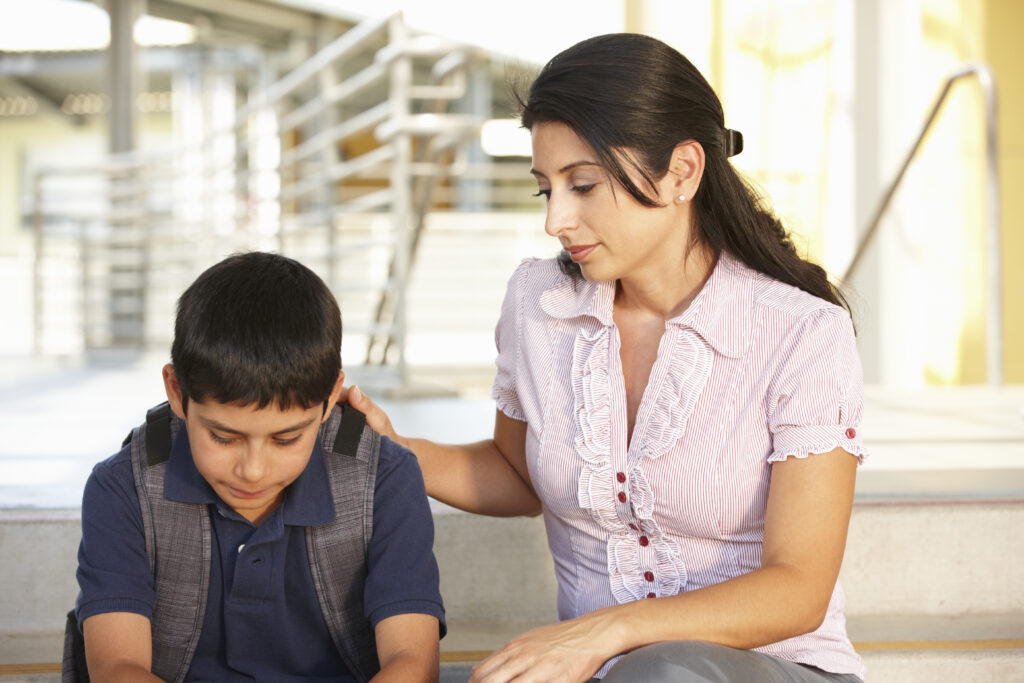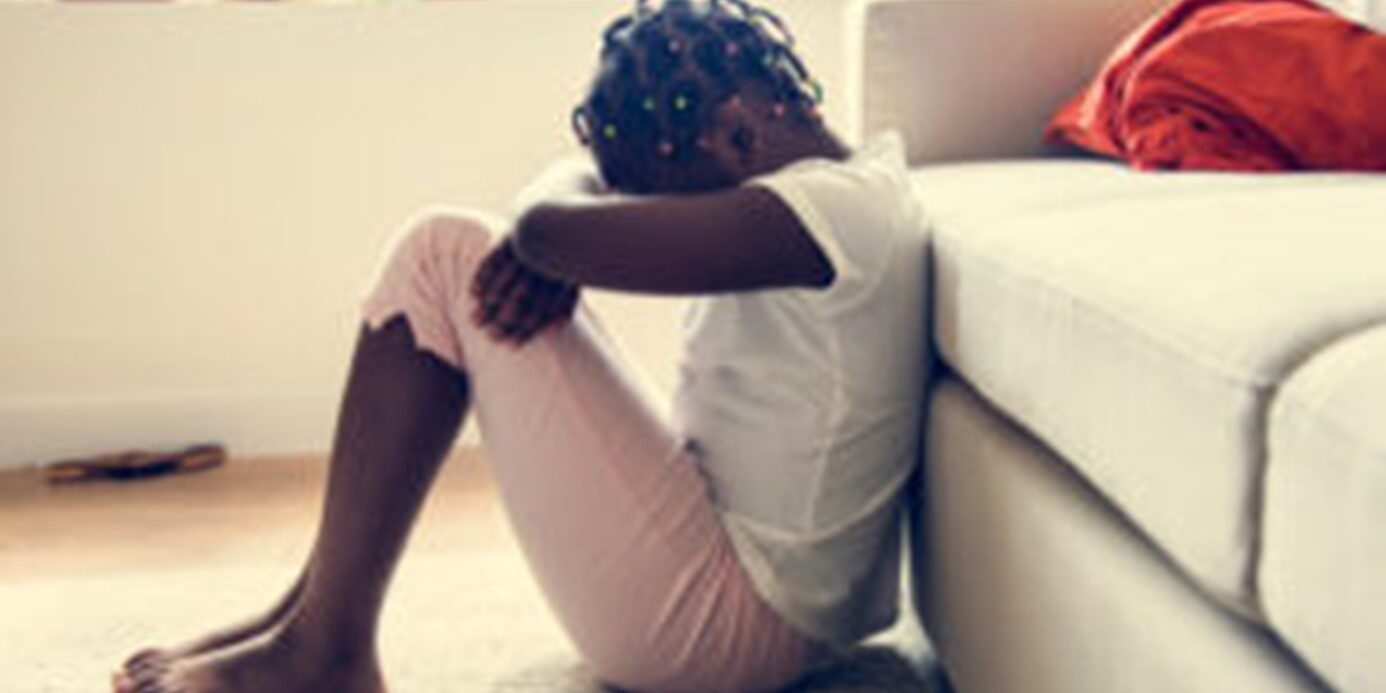Some children come into foster care due to experiencing sexual abuse, and in the second part of our series on abuse, we ask…
What is sexual abuse?
Childline’s guidance for children and young people defines sexual abuse as:
“When someone is forced, pressurised or tricked into
taking part in any kind of sexual activity with another person.”
(childline.org.uk, 2021)
Firstly, some facts for children and young people about sexual abuse
What actually is sexual abuse? Who can be the abuser? Who can be abused? Here are some answers below – and when we say ‘children’ we mean both ‘children and young people’ including teenagers:
- both girls and boys (or non-binary) can be sexually abused
- children can be sexually abused by a stranger
- children can be sexually abused by someone that they love and trust
- young people can be sexually abused by a boyfriend or girlfriend
- children can be sexually abused by a person of the same sex
- sexual abuse isn’t always ‘full sex’ but can also include touching, kissing, oral sex or anything sexual
- sexual abuse can happen online as well as offline
- sexual abuse can happen in school or college – by adults but also a classmate or a friend
If you are worried, please know that you’re not alone – there are people who you can talk to and who can help you.
So, caregivers, what types of sexual abuse do you think children and young people might experience?
Sexual abuse is a complex subject, but some examples of sexual abuse include:
- being touched in a way that the child doesn’t like without giving permission or consent
- someone flashing or exposing themselves to them online or offline
- being forced to have sex (intercourse), look at sexual pictures or videos, do something sexual or watch someone do something sexual.
Sexual abuse can include lots of things like rape and sexual assault, sexual harassment, online grooming and domestic abuse or violence. As well as sexual exploitation (being pressure into having sex with someone in return for getting something like money or drugs), sexting or child pornography.
What are the effects of child sexual abuse on children?
Natasha Tracy, author of an award-winning mental health blog, suggests “Many psychological effects of child sexual abuse are seen in children of any age, as no child is psychologically prepared to cope with sexual stimulation. Even a two or three year old, who cannot know the sexual activity is wrong, will develop problems resulting from the inability to cope with the effects of child sexual abuse.
As a child ages, the effects of child sexual abuse may be even more obvious. Most sexual abusers are known by the victim and so the child is often trapped between their loyalty for the abuser and the sense that what is happening is wrong. Telling someone about the abuse becomes terrifying as the child may fear it will result in:
- Them getting in trouble, being shamed or judged
- A loss of love
- Violence (often due to threats from the abuser)
- The break-up of the family
The effects of child sexual abuse usually include low self-esteem, a feeling of worthlessness, a lack of trust in adults and an abnormal or distorted view of sex. The following may be effects of child sexual abuse:
- Unusual interest in or avoidance of all things of a sexual nature
- Sleep problems or nightmares
- Depression or withdrawal from friends or family
- Seductiveness
- Statements that their bodies are dirty or damaged, or fear that there is something wrong with them in the genital area
- Refusal to go to school
- Delinquency/conduct problems
- Secretiveness
- Aspects of sexual molestation in drawings, games, fantasies
- Unusual aggressiveness
- Extreme fear or anxiety
- Substance use / abuse
- Suicidal behaviour
“(Natasha Tracy, healthyplace.com, 2021)
How best can a foster carer support a sexually abused child?
The top 3 things that a child that has experienced sexual abuse in any form will need from their foster carers are:
- emotional support and reassurance that what has happened to them is not their fault
- understanding that the child may nor realise that what they have experienced is abuse
- lots and lots to time and patience, as well as for them to be listened to and believed
Sexually harmful behaviour by children
Sadly, children who have suffered from sexual abuse may, as well as being at an increased risk of future abuse, engage in sexually harmful behaviour. The Stop It Now website suggests that “Children, particularly in younger age groups, might engage in such behaviour without knowing that it is wrong or abusive. That’s why it can be more helpful to talk about harmful sexual behaviour rather than abuse.
Harmful sexual behaviour (HSB) is a term used to describe sexual actions that are outside what is safe for a young person’s stage of development. It includes actions that can harm either the child or young person themselves, or another person. It can include:
- frequently and intentionally accessing age-inappropriate sexual material online
- using inappropriate language
- undertaking mutual sexual activity they are not ready for with peers
- sending and receiving illegal images
- sexual interactions where there are significant power differences, lack of consent, or through force or threats
- engaging in abusive or sexually violent sexual behaviour online or offline.
(stopitnow.org.uk, 2021)
Resources
– Books
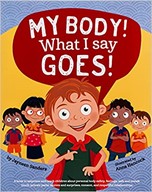 My Body! What I Say Goes!: Teach children body safety, safe/unsafe touch, private parts, secrets/surprises, consent, respect
My Body! What I Say Goes!: Teach children body safety, safe/unsafe touch, private parts, secrets/surprises, consent, respect
By Jayneen Sanders
The crucial skills taught in this book will help children to protect their bodies from inappropriate touch. Children will be empowered to say in a strong and clear voice, “This is my body! What I say goes!” Through age-appropriate illustrations and engaging text this book, written by the author of ‘No Means No!’ and ‘Some Secrets Should Never Be Kept’, will teach children the following crucial and empowering skills in personal body safety: identifying safe and unsafe feelings, recognizing early warning signs, developing a safety network, using the correct names for private parts, understanding the difference safe and unsafe touch, understanding the difference between secrets and surprises, and respecting body boundaries. Also included in this book are in-depth Discussion Questions to further enhance the learning and to initiate important family conversations around body autonomy.
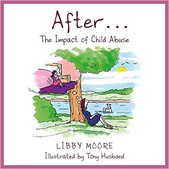 After…: The Impact of Child Abuse
After…: The Impact of Child Abuse
by Libby Moore
‘A kind, tough, brave, important little story … it will be a godsend to so many people, grown, growing and very young’ – Joanna Lumley OBE
I want to talk about the things that are happening to you… to us.
As a little girl, Libby Moore was sexually abused by someone she should have been able to trust. Sadly, her experience is not uncommon. Many vulnerable children find themselves trapped in similarly devastating situations.
Abuse leaves indelible marks; Libby lives with severe low self-esteem that has affected her relationships, career and choices into adulthood. She wishes that she could have supported and comforted her younger self, and explained that even when darkness seems all around light still exists. After… is Libby’s way of reaching out and reconnecting with her younger self – and to all other survivors of child abuse.
Essential and heart-breaking, with powerful and expressive illustrations by acclaimed cartoonist Tony Husband, this is a compelling and universal personal story. It will comfort and inspire anyone who has suffered childhood violence and abuse, and act as a trusted, therapeutic resource. Full of sensitivity and understanding, it takes a clear-sighted look at how trauma can affect and shape us and explains how through self-compassion we can learn to embrace life and begin to live again.
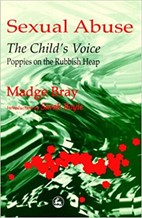 Sexual Abuse: The Child’s Voice: Poppies on the Rubbish Heap
Sexual Abuse: The Child’s Voice: Poppies on the Rubbish Heap
by Madge Bray
By first describing her methods and subsequently illustrating them with a selection of case studies, Madge Bray shows the reader how abuse can affect the mental well-being of children, and how the repair of the child’s trust of adults is crucial to the process of healing. Guiding the reader and the child through the counselling process, she illustrates the devastation which abuse can cause, but also the resilience of children and the means they have to protect themselves from the reality of abuse. Sexual Abuse: The Child’s Voice is a unique insight into the minds of abused children, providing a basis for therapeutic work.
(reviews by amazon.co.uk, 2021)
Online Resources
https://www.truthproject.org.uk/about-the-truth-project – The Truth Project for adult survivors of childhood sexual abuse
https://www.stopitnow.org.uk/concerned-about-a-child-or-young-persons-sexual-behaviour/preventing-harmful-sexual-behaviour/ – Stop It Now re children that present with harmful sexual behaviours
Sources
https://www.childline.org.uk/info-advice/bullying-abuse-safety/abuse-safety/sexual-abuse/ – Childline
https://www.healthyplace.com/abuse/child-sexual-abuse/effects-of-child-sexual-abuse-on-children – Natasha Tracy, Healthy Place
by Lynsey Dobbs – Senior Recruitment Officer, UK Fostering
